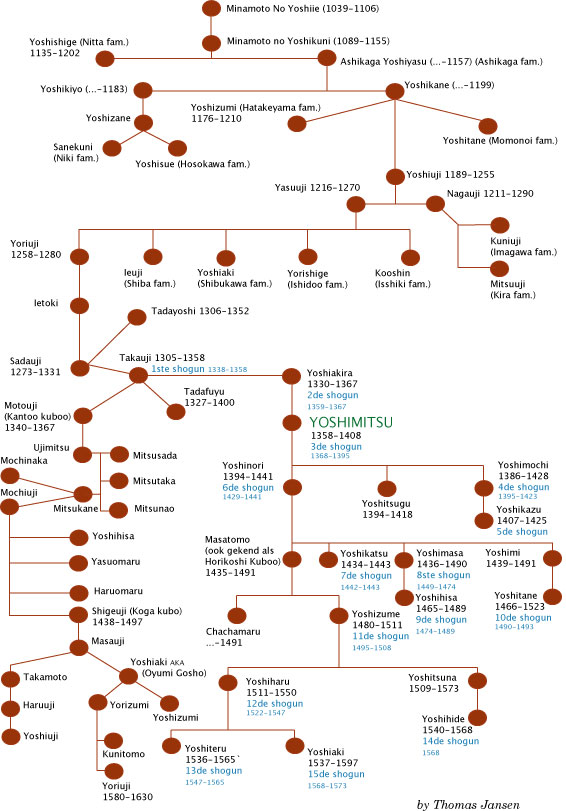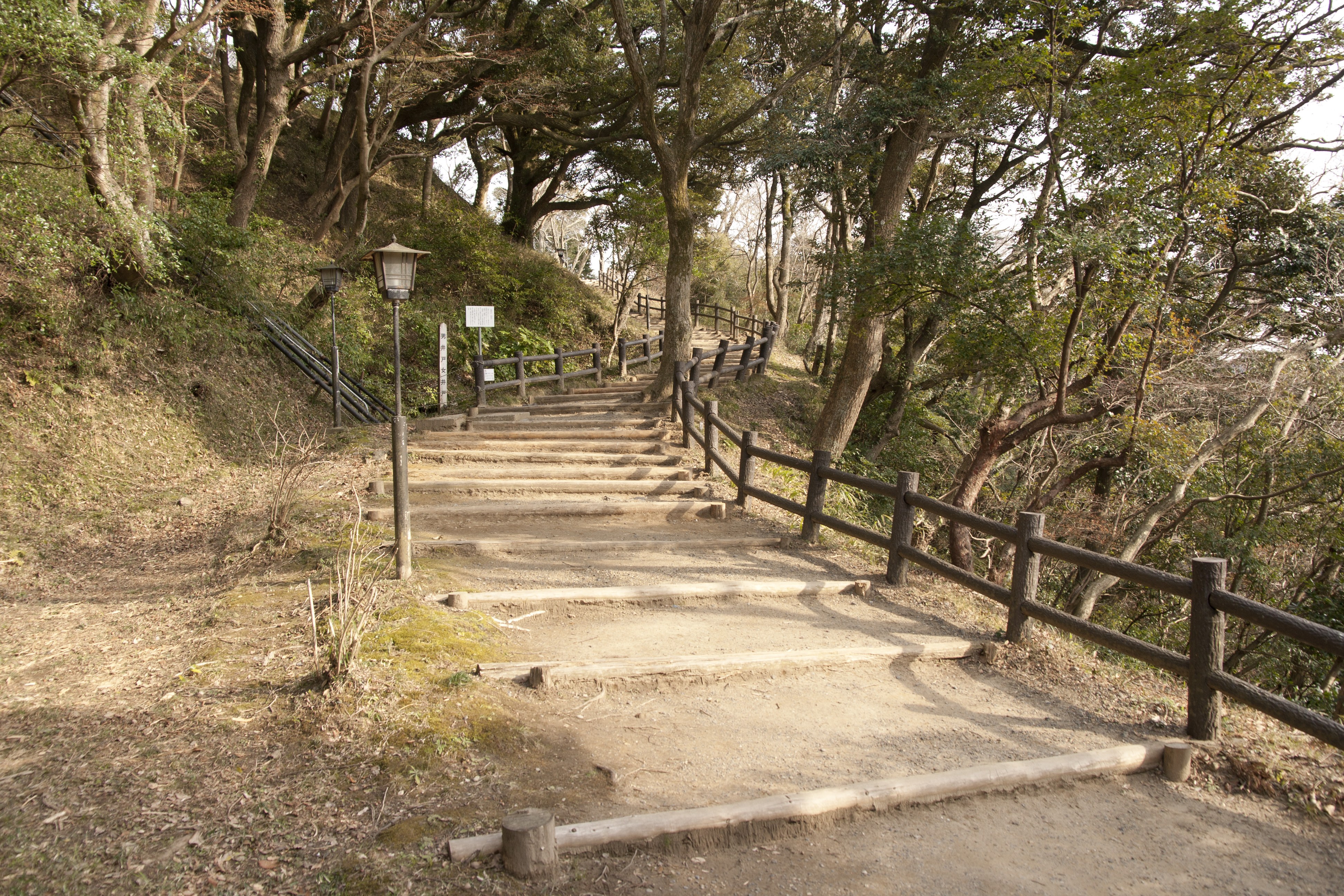|
Battle Of Kōnodai (1538)
The 1538 battle of Kōnodai took place during the Sengoku period of Japanese history, fought by the leader of the late Hōjō clan, Hōjō, Hōjō Ujitsuna, against the combined forces of Satomi Yoshitaka and Ashikaga Yoshiaki (Oyumi). After a long-fought battle between the Hōjō and the allied forces, Ujitsuna emerged as the victor. During the battle Yoshiaki died. Notes References *Turnbull, Stephen. The Samurai Sourcebook. London: Cassell & Co., 1998. 1538 in Japan Battles of the Sengoku period, Konodai (1538) Conflicts in 1538 {{Japan-battle-stub ... [...More Info...] [...Related Items...] OR: [Wikipedia] [Google] [Baidu] |
Sengoku Period
The was a period in History of Japan, Japanese history of near-constant civil war and social upheaval from 1467 to 1615. The Sengoku period was initiated by the Ōnin War in 1467 which collapsed the Feudalism, feudal system of Japan under the Ashikaga shogunate. Various samurai warlords and Japanese clans, clans fought for control over Japan in the power vacuum, while the emerged to fight against samurai rule. The Nanban trade, arrival of Europeans in 1543 introduced the arquebus into Japanese warfare, and Japan ended its status as a Tributary system of China, tributary state of China in 1549. Oda Nobunaga dissolved the Ashikaga shogunate in 1573 and launched a war of political unification by force, including the Ishiyama Hongan-ji War, until his death in the Honnō-ji Incident in 1582. Nobunaga's successor Toyotomi Hideyoshi completed his campaign to unify Japan and consolidated his rule with numerous influential reforms. Hideyoshi launched the Japanese invasions of Korea (159 ... [...More Info...] [...Related Items...] OR: [Wikipedia] [Google] [Baidu] |
Shimōsa Province
was a province of Japan in the area modern Chiba Prefecture, and Ibaraki Prefecture. Nussbaum, Louis-Frédéric. (2005). "''Shimōsa''" in . It lies to the north of the Bōsō Peninsula (房総半島), whose name takes its first ''kanji'' from the name of Awa Province and its second from Kazusa and Shimōsa Provinces. Its abbreviated form name was or . Shimōsa is classified as one of the provinces of the Tōkaidō. It was bordered by Kazusa Province to the south, Musashi and Kōzuke Provinces to the west, and Hitachi and Shimotsuke Provinces to the north. Under the ''Engishiki'' classification system, Shimōsa was ranked as a "great country" (大国) and a far country (遠国). History Shimōsa was originally part of a larger territory known as , which was divided into "upper" and "lower" portions (i.e. Kazusa and Shimōsa) during the reign of Emperor Kōtoku (645–654). It was well-known to the Imperial Court in Nara period Japan for its fertile lands, and is mentioned in ... [...More Info...] [...Related Items...] OR: [Wikipedia] [Google] [Baidu] |
Late Hōjō Clan
Late may refer to: * LATE, an acronym which could stand for: ** Limbic-predominant age-related TDP-43 encephalopathy, a proposed form of dementia ** Local-authority trading enterprise, a New Zealand business law ** Local average treatment effect, a concept in econometrics Music * ''Late'' (album), a 2000 album by The 77s * Late!, a pseudonym used by Dave Grohl on his ''Pocketwatch'' album * Late (rapper), an underground rapper from Wolverhampton * "Late" (song), a song by Blue Angel * "Late", a song by Kanye West from ''Late Registration'' Other * Late (Tonga), an uninhabited volcanic island southwest of Vavau in the kingdom of Tonga * "Late" (''The Handmaid's Tale''), a television episode * LaTe, Oy Laivateollisuus Ab, a defunct shipbuilding company * Late may refer to a person who is Dead See also * * * ''Lates'', a genus of fish in the lates perch family * Later (other) * Tardiness * Tardiness (scheduling) In scheduling, tardiness is a measure of a delay in exe ... [...More Info...] [...Related Items...] OR: [Wikipedia] [Google] [Baidu] |
Satomi Clan
The was a Japanese samurai clan of the Sengoku period (1467–1573) and early Edo period (1603–1868). The clan ruled Awa Province as a ''Sengoku daimyō'' and was a major military power in the Kantō region during the wars of the Nanboku-chō period. Although confirmed as ''daimyō'' of Tateyama Domain by the Tokugawa shogunate. Origins The Satomi claimed descent from the Seiwa Genji clan via Nitta Yoshishige (d. 1202), whose son Yoshitoshi took "Satomi" as his surname. Awa Satomi clan After the fall of the Kamakura shogunate in 1333, the Kantō region was high unstable due to incessant conflict between the ''Kantō kubō'' under Ashikaga Shigeuji based in Kamakura and the Ashikaga shogunate, represented by the '' Kantō Kanrei'' under Uesugi Noritada. The minor lords of Awa Province (present-day southern Chiba Prefecture ) were loyal to the ''Kanrei'', but geographically, the province was very near Kamakura, separated only by the narrow Uraga Channel. To seize Awa Provin ... [...More Info...] [...Related Items...] OR: [Wikipedia] [Google] [Baidu] |
Ashikaga Clan
The was a prominent Japanese samurai clan which established the Muromachi shogunate and ruled Japan from roughly 1333 to 1573. The Ashikaga were descended from a branch of the Minamoto clan, deriving originally from the town of Ashikaga in Shimotsuke Province (modern-day Tochigi Prefecture). For about a century the clan was divided in two rival branches, the Kantō Ashikaga, who ruled from Kamakura, and the Kyōto Ashikaga, rulers of Japan. The rivalry ended with the defeat of the first in 1439. The clan had many notable branch clans, including the Hosokawa, Imagawa, Hatakeyama (after 1205), Kira , Shiba, and Hachisuka clans. After the head family of the Minamoto clan died out during the early Kamakura period, the Ashikaga came to style themselves as the head of the Minamoto, co-opting the prestige which came with that name. Another Ashikaga clan, not related by blood, and derived instead from the Fujiwara clan, also existed. History Emperor Go-Daigo 後醍醐天皇 ... [...More Info...] [...Related Items...] OR: [Wikipedia] [Google] [Baidu] |
Hōjō Ujitsuna
was the son of Hōjō Sōun, founder of the Go-Hōjō clan. He continued his father's quest to gain control of the Kantō (the central area, today dominated by Tokyo, of Japan's main island). Biography In 1524, Ujitsuna took Edo Castle, which was controlled by Uesugi Tomooki, thus beginning a long-running rivalry between the Hōjō and Uesugi families. In 1526, Hojo Ujitsuna was defeated by Takeda Nobutora in the Battle of Nashinokidaira. Later, the Uesugi attacked and burned Tsurugaoka Hachimangū in Kamakura, which was a major loss to the Hōjō symbolically, because the earlier Hōjō clan from which they took their name fell in the Siege of Kamakura (1333). (Ujitsuna soon started rebuilding Tsurugaoka Hachimangū and was completed in 1540.) In 1530, his son Ujiyasu defeated Uesugi Tomooki in the Battle of Ozawahara. The Uesugi attacked Edo again in 1535, when Ujitsuna was away fighting the Takeda; however, Ujitsuna returned and defeated Uesugi Tomooki reclaiming his la ... [...More Info...] [...Related Items...] OR: [Wikipedia] [Google] [Baidu] |
Hōjō Tsunashige
or Hōjō Tsunanari also known as "Jio Hachiman", was an officer of great skill under the Hōjō clan. The brother in law of Hōjō Ujiyasu. Around the Kantō region, he fought in many battles supporting the Hōjō, also contributing to the expansion of the domain of Hōjō, he was well known for his fighting skill and also an excellent diplomat. Biography Tsunashige's childhood name was 'Katsuchiyo'. His father was Kushima Masashige, a vassal of the Imagawa clan. Tsunashige was the stepson of Hōjō Ujiyasu's brother, Tamemasa, and son-in-law of Hōjō Ujitsuna. He was fought for Hōjō from 1537 and known as 'Jio Hachiman' (God of worriers with yellow flags) for his soldiers yellow uniforms, along with outstandingly creative banners. Tsunashige was the castellan (castle lord) in command of Tamanawa Castle and Kawagoe Castle. In 1545, during the Siege of Kawagoe Castle, despite an overwhelming attacking force, numbering around 85,000, the 3,000 men Kawagoe Castle's garri ... [...More Info...] [...Related Items...] OR: [Wikipedia] [Google] [Baidu] |
Satomi Yoshitaka
was a Japanese samurai and head of the Satomi clan. In 1534, he killed his nephew and became a head of the Satomi clan. He fought against the Later Hōjō clan under Ashikaga Yoshiaki in the Battle of Kōnodai. However, Yoshiaki was killed during the battle and was defeated. Following the death of Ashikaga Yoshiaki, Yoshitaka expanded his territory and ruled most of the Kazusa Province. In 1554, his Kururi castle was surrounded by 20,000 soldiers of the Later Hōjō clan but Yoshitaka and his son Satomi Yoshihiro was a samurai of the Satomi family who fought against the Hōjō clan during Japan's Sengoku period. He participated in the Siege of Odawara (1561) againts Hōjō clan under Uesugi Kenshin. Later, he was defeated by Hōjō Ujiyasu at the battle ... defeated them. He retired in 1562 and relinquished the clan's head position to Yoshihiro. References Samurai 1507 births 1574 deaths Satomi clan {{Samurai-stub ... [...More Info...] [...Related Items...] OR: [Wikipedia] [Google] [Baidu] |
Ashikaga Yoshiaki (Oyumi)
"Ashikaga Yoshiaki" in ''The New Encyclopædia Britannica''. Chicago: Encyclopædia Britannica Inc., 15th edn., 1992, Vol. 1, p. 625. was the 15th and final ''shōgun'' of the Ashikaga shogunate in Japan who reigned from 1568 to 1573.Ackroyd, Joyce. (1982) ''Lessons from History: The Tokushi Yoron'', p. 332. His father, Ashikaga Yoshiharu, was the twelfth ''shōgun'', and his brother, Ashikaga Yoshiteru, was the thirteenth ''shōgun''. Biography He was born to Ashikaga Yoshiharu on 5 December 1537. He entered Kofuku-ji temple as monk, but when his older brother Yoshiteru was killed by the Miyoshi clan, he returned to secular life and took the name "Yoshiaki". At the time, the Ashikaga shogunate had been severely weakened; its authority was largely ignored across Japan. Regardless, various factions still fought to control the central government, as it still held some prestige despite its dimished status. Ashikaga Yoshiteru attempted to overthrow the Miyoshi who effectively con ... [...More Info...] [...Related Items...] OR: [Wikipedia] [Google] [Baidu] |
1538 In Japan
__NOTOC__ Year 1538 ( MDXXXVIII) was a common year starting on Tuesday (link will display the full calendar) of the Julian calendar. Events January–June * February 24 – Treaty of Nagyvárad: Peace is declared between Ferdinand I, future Holy Roman Emperor and the Ottoman Empire. John Zápolya is recognized as King of Hungary (Eastern Hungarian Kingdom), while Ferdinand retains the northern and western parts of the Kingdom, and is recognized as heir to the throne. * April 26 – Battle of Las Salinas: Almagro is defeated by Francisco Pizarro, who then seizes Cusco. * June 18 – Truce of Nice: Peace is declared between Emperor Charles V and Francis I of France. * June 19 – Dissolution of the Monasteries in England: The newly founded Bisham Abbey is dissolved. July–December * August 6 – Bogotá, Colombia is founded by Gonzalo Jiménez de Quesada. * September 28 – Battle of Preveza: The Ottoman fleet of Suleiman the Magn ... [...More Info...] [...Related Items...] OR: [Wikipedia] [Google] [Baidu] |
Battles Of The Sengoku Period
A battle is an occurrence of combat in warfare between opposing military units of any number or size. A war usually consists of multiple battles. In general, a battle is a military engagement that is well defined in duration, area, and force commitment. An engagement with only limited commitment between the forces and without decisive results is sometimes called a skirmish. The word "battle" can also be used infrequently to refer to an entire operational campaign, although this usage greatly diverges from its conventional or customary meaning. Generally, the word "battle" is used for such campaigns if referring to a protracted combat encounter in which either one or both of the combatants had the same methods, resources, and strategic objectives throughout the encounter. Some prominent examples of this would be the Battle of the Atlantic, Battle of Britain, and Battle of Stalingrad, all in World War II. Wars and military campaigns are guided by military strategy, whereas ... [...More Info...] [...Related Items...] OR: [Wikipedia] [Google] [Baidu] |




